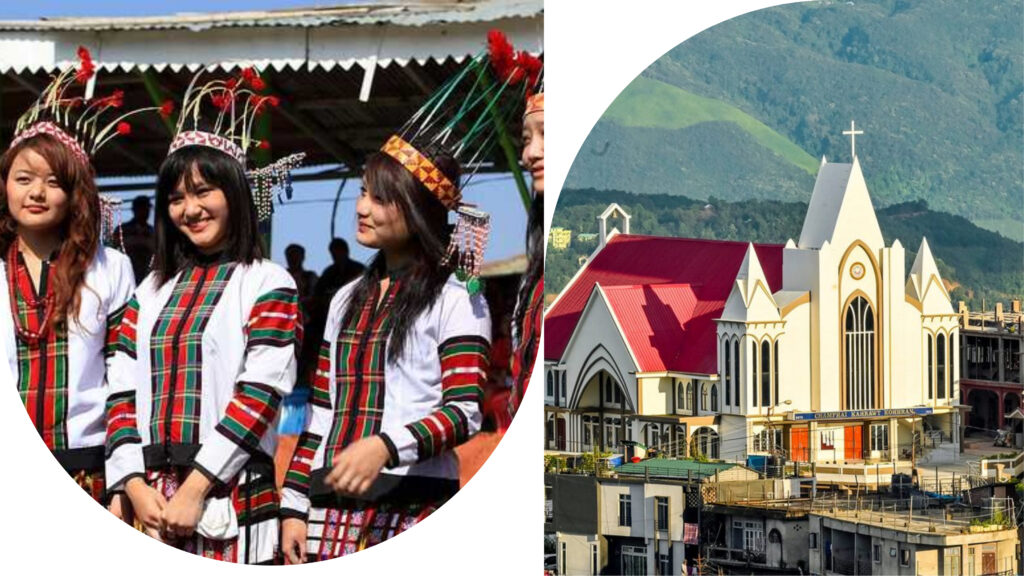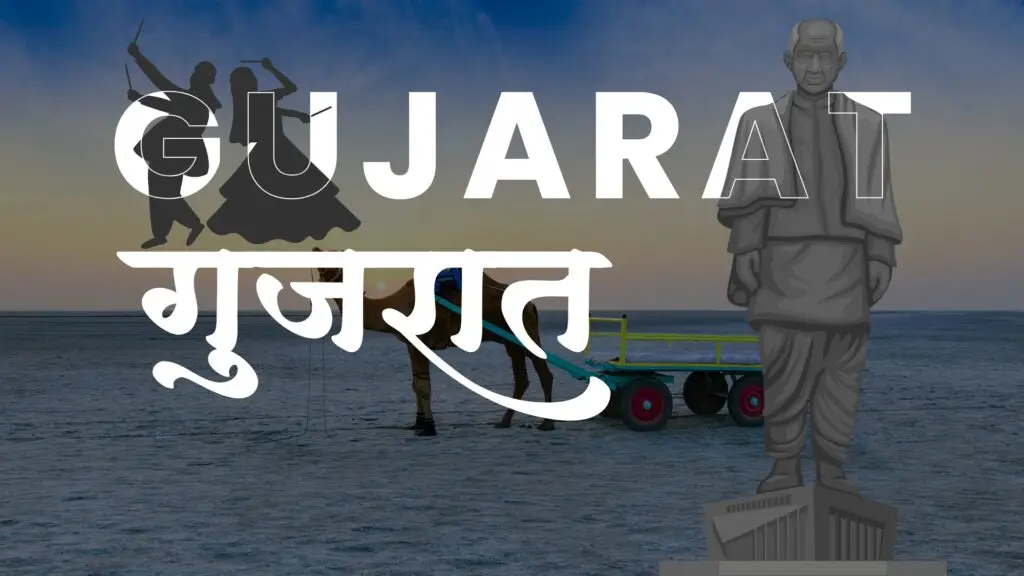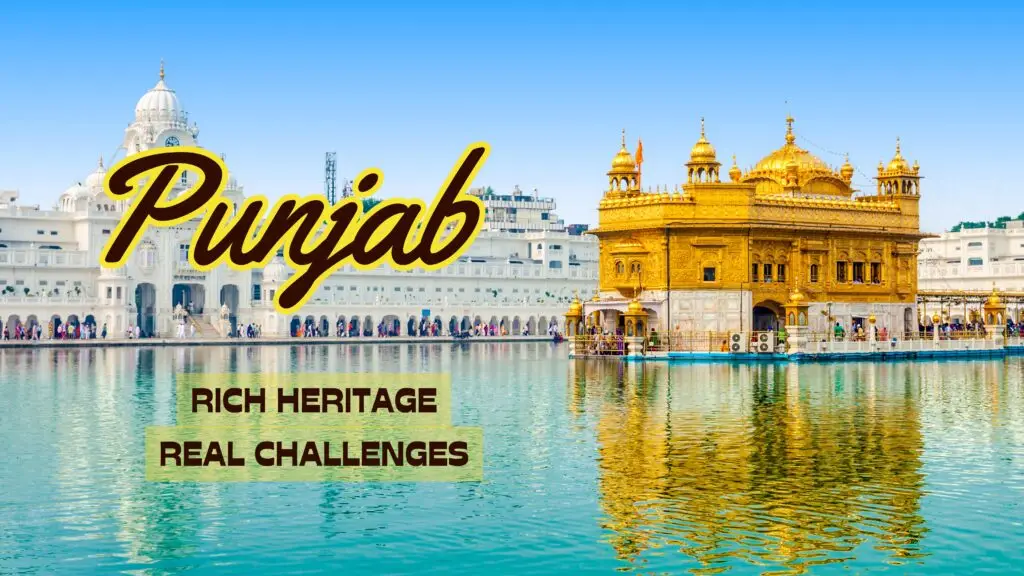The state of Mizoram is placed in the northeast corner of India and is a land of unspeakable beauty and striking poise. Having the name Land of the Mizo people, it is a land of rolling hills and emerald valleys covered in a blanket of mist with a feeling of peace filling the air. Mizoram is a different story of a people who have soldiered through the ills with a grace that has changed a story of suffering to one of harmony and development.
Not merely a geographical place, Mizoram is a living symbol of resilience, a living, breathing testament where haunting nature, a thriving culture that has an inextricable bond with its community and song. Come along an enchanted adventure to this beautiful state with its impressive history and unique traditions and its ambitious character on a dynamic future.

The Mizo Saga: A History of Identity
The history of the Mizo people is the interesting story of migrations, independence and a tough-gained search of peace. Different tribes of the Mizos such as the Lushai, Hmar, Ralte and Pawi among others migrated to Southeast Asia centuries ago and inhabited the rocky hills where they settled. They were autonomous villages, which had their own chiefs and built a solid feeling of having a community and a distinct culture.
- British Era: The British came to the region in the 19th century and annexed the region in 1895 and renamed it Lushai Hills. During the times of administering the area, they mostly did not interfere with the internal tribal governance. It is during this season when Christianity was introduced by Welsh missionaries significantly changing the Mizo society accompanied by the emphasis in education, literacy, and community formation.
- Post Independence and Insurgency: Since India gained its independence in 1947 the Lushai Hills became a district of Assam. The insurgency towards a separate Mizo state started in 1966 and it was a long painful exercise. This was a hard-earned battle of identity and political self-determination and it resulted in peace.
- Peace Accord and Statehood: The history of statehood in Mizoram was when the Mizoram peace Accord was signed in 1986. It culminated the two-decades-long struggle and resulted in the creation of Mizoram as the 23 rd state of Indian union on February 20, 1987. This agreement is commonly cited as one of the most productive peace treaties of modern times demonstrating the efforts of Mizo people to reach peace and the possibility to create a new era.
Such history and cost of struggle and reconciliation have made a form of collective identity and love of peace indestructible.
Mizo traditions
The Mizo culture is wonderfully vibrant and is characterised by having high sense of community spirit, appreciation of nature and love of music and dance.
- Language: the official and most commonly spoken language is Mizo, effectively nearly the whole population is literate. Another very popular language is English mainly in the areas of administration and learning.
- Religion: Christianity is the primary religion of the Mizos with a major part of the population being followers of Christian faith. The church is at the hype of social life, social functions and cultural activities.
- Festivals: Mizo festivals are deeply connected to the agricultural cycle, particularly the traditional jhum (slash-and-burn) cultivation method.
- Chapchar Kut: People celebrate this festival in March after the jhum land is clear and ready to plant. It is a grand celebration of music, dance, and community feasts, with the famous Cheraw (Bamboo Dance) as the main highlight.
- Mim Kut: Is celebrated following the harvest of the maize in August/September.
- Pawl Kut: The harvest festival of the season, celebrated in December.
- Arts and Crafts: Mizos are highly gifted and artistic people and their craft reflects their creativity and various different cultures.
- Weaving: Conventional weaving is highly evolved and on the ground level, it is the art of villages/tribes with their individual patterns and color. The Puan (a traditional wrap-around cloth) is a significant piece of Mizo attire, with different designs signifying different occasions.
- Bamboo and Cane Crafts: Bamboo craftsmen produce an astonishing variety of products- furniture and baskets, musical instruments and the ever-popular Cheraw dance props.
- Wood Carving: Fine carvings are made out of wood to look decorative ceremonial and rituals.
- Music & Dance: Mizo consider music a part of life. The Mizo songs are tuneful and the songs narrate stories of love, nature, and the community life. The Cheraw Dance (Bamboo Dance) is perhaps the most iconic Mizo dance, performed by women as they rhythmically step between and on bamboo staves held by men.
Geography and Environment
Mizoram is a state of the wonderful natural beauty being dominated with Mizo Hills which are part of larger range originating in Myanmar.
- Mountainous Terrain: The whole of the state is mountainous terrain in the form of steep valleys, twisting rivers and sloppy terrains. On the south, highest is a mountain named as the Phawngpui, a blue mountain.
- Rivers: Major rivers like the Tlawng, Tuichawng, and Kolodyne (Chhimtuipui) flow through the state, creating dramatic gorges and providing water resources.
- Forests: Mizoram is by far a heavily forested state of India with lush tropical and sub-tropical forests that cover most parts of the state. They contain many biodiversity among these forests, as they are full of flora and fauna.
- Lakes: The south of the country has natural lakes like the Palak Lake that create the beautiful scenery and are also key ecological areas.
The endangered environment is seen in Mizoram. Logging and widespread jhum farming are of great concern to deforestation. Sustainable agriculture, afforestation campaigns, and establishment of conservation zones to conserve the fragile state ecology are being propagated by the government and the other local institutions. Its usage of a lot of plastic and the management of waste in urban regions is another environmental challenge faced by the state.
Livelihood and Economic Development
Historically, the Mizo people have had their occupation on the jhum cultivation, which is still being practiced by a number. There is a gradual but serious change in the economy of the state.
- Agriculture: Rice, maize and several kinds of fruits are the main crops. Mizoram has got good horticultural products particularly exotic fruits such as passion fruit, oranges and pineapple. The state is trying to encourage terrace farming and other more sustainable agricultural practices in order to wean people away from jhum farming.
- Forestry: Forest products contribute to the local economy, but are based on forestry done in a sustainable manner, considering the vast amount of forest land.
- Industry: The industries sector is minor and strives on traditional handicrafts, handloom weaving and agro-based industries. The government is trying to invite investment in such places.
- Tourism: A booming sector which is the major element of the modern economy of the state, ensuring the livelihoods of many through the hospitality, transport and local crafts.
- Bamboo: Mizoram has abundant supply of bamboo and we are also looking actively into the field of bamboo production, be it handicrafts or building materials.
The geographical remoteness and poor infrastructure of Mizoram also pose a problem to the economic growth of this state. However, the government is investing in improving roads, air connectivity (Lengpui Airport), and digital infrastructure to connect with the rest of India and unlock its full economic potential.
Hospitality and Tourism
The hospitality of the Mizos is friendly, natural and famous. The residents are also famous with their friendliness and community working spirit and its visitors feel like home. They also use English very extensively and their literacy rate is high making communication easy to their traveling clients.
Mizoram is one place that will give a true sense of an offbeat-tourism experience:
- Aizawl: the capital city built on top of a ridge is crucially beautiful looking down at the hills around. The city is a fine destination to enjoy Mizo culture and the lives in the city.
- Champhai: an attractive town that is close to the Myanmar border boasting of a spectacular view of the Myanmar hills and valleys.
- Phawngpui (Blue Mountain): The highest peak, located in a national park of the same name. It is a very beautiful trekking point which is characterised by abundant flora and fauna.
- Palak Lake: This is the biggest lake in the state and is in a far away place where a very unspoiled form of natural beauty can be viewed.
- Reiek Tlang: Reiek Tlang is a nice mountain peak 10km near Aizawl, with trekking and beautiful view.
- Durtlang Hills: Present excellent view of Aizawl city above and in the night.
- Vantawng Falls: It is the tallest falls in Mizoram which belongs to Serchhip district.
- Cultural Immersion: Living in local family home-stays and enjoying during the festivals such as Chapchar Kut are the best options to learn the diverse tribal cultures of Mizoram.
The state government is also working hard at enhancing tourism infrastructure, pushing eco-tourism, and even selling its peculiar cultural and natural attractions to more people.
Challenges and The Future
Mizoram is exposed to a exclusive group of problems which are both of geographical and developmental kind:
- Infrastructure: Weak network of road connectivity, accessibility by air and rail and power supply are some of the greatest challenges towards economic growth as well as tourism particularly in outlying regions.
- Economic Diversity: The overdependence on the ancient form of agriculture must be changed to focus more on the modern and sustainable economic affairs such as tourism, horticulture and small industries.
- Waste Management: One of the issues is how to waste materials like plastic in its scenic environment due to the way it is getting urbanized and attracting tourists.
- Reliance on Central Funds: The development of the state entirely depends on the assistance of the central government to fund its development project.
Nonetheless, Mizoram is seeing a brighter and greener future with a clear vision towards achieving it. The government is putting emphasis on:
- Connectivity: In booking up the roads, air connectivity and digital infrastructuring to enable the state to be linked to the rest of India and Myanmar.
- Sustainable Development: Encourage sustainable agricultural activities, eco tourism and the protection of forests.
- Skill Development: Ensuring the youth has the skills in providing hospitality, IT and other modern professional areas.
- Entrepreneurship: Promoting micro- entrepreneurship in agro-business, crafts, and tourism.
Mizoram: The Unmistakable Soul
Mizoram is both a state that one cannot easily label. It is a place of so much beauty and so much harmony of living together- a place with a very rich struggle and a new peaceful present. The undefeated spirit of the Mizo people, deep attachment to their land and their rich and rich cultural life make Mizoram an exclusive and memorable place in its own right. The state is furthers showing that even in the farther reaches, deep roots of identity, community and perseverance can even work wonders in forming a land of peace, beauty and unlimited potential.




